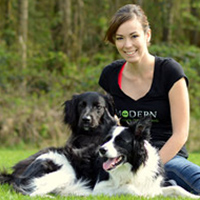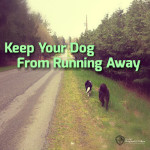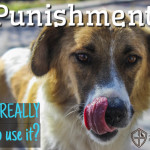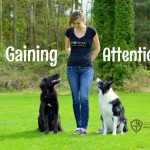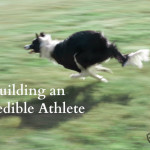50 Training Tips from a Professional
50 Training Tips from a Professional
Small things you can do that make a big difference with your dog.
- When you feed your dog a treat, say “good dog” as you release the treat. This classically conditions the dog to love hearing those words.
- When planning on leaving an off-leash area, call your dog to you a few times before you actually leave, put the leash on and take it off again. This way your dog doesn’t always think the leash ends the fun.
- Give your dog a filled Kong before you leave so your dog will anticipate your departure.
- If your dog is doing something good, let them know! “GOOD DOG!” – they notice.
- Whenever a squirrel or cat pops out in front of you, have your dog sit right away and watch them.
- Have your dog sit at every door before crossing through to prevent door dashing.
- During your daily walks, stop at every curb and ask your dog to sit.
- Play fetch (on a long line) in highly stimulating environments, this will help teach the dog to drown out distractions and focus on you.
- Don’t place a collar or body harness over your dog’s head, teach them to walk into it on their own terms.
- If your dog barks at nothing, gain his attention right away and redirect him onto something else.
- If your dog feels anxious or nervous, petting him can actually lower his heart rate.
- Touch your dog’s toenails on a regular basis to make nail trimming easier.
- Feed your dog’s dinner at the same time as your dinner to avoid begging.
- Don’t ever say your dog’s name negatively.
- Use name recognition with family and friends
- After a walk or exercise, give your dog a cool-down on his bed when you get in to train calm time.
- When your dog drinks water, give the cue “water” to condition your dog to drink water on cue for those hot days where they may forget, herding breeds are prone to do this.
- Give your dog a treat or suitable bone when asking him to go to bed to reinforce calm time.
- Wipe your dog’s feet from day one when coming in from outside.
- When your dog is resting calmly, reward him! This is called capturing calmness.
- When your dog gets tangled around a pole, help him move around the pole rather than moving the leash for him, this is problem solving.
- Every time you call your dog, make something amazing happen right away, you’ll have a bomb-proof recall after time.
- Have your dog sit (say please) when people are approaching him.
- If you ever need to take something from your dog, give something in return to prevent resource guarding.
- When your dog is eating a bone or dinner, instead of petting the dog like many resources tell you to, drop a good treat in front of his paws and walk away. Soon the perception of you approaching will be anticipation.
- During calm time, training your dog to have calm time by giving the dog something calm to do.
- Have fun while training – if you’re not enjoying yourself, neither is your dog.
- Play with your dog every day, this will create a strong bond and increase listening skills.
- If your dog encounters a problem that can be solved on his own, help him figure it out like you would with a toddler.
- Don’t bathe your dog too regularly with shampoo, this will strip the natural oils and actually make the dog smell faster. Rinse with water and conditioner in between baths.
- Don’t use aversive training equipment – using these can have negative side effects such as increased reactivity and aggression, fear, learned helplessness, anxiety and more.
- NEVER play the chase game with your dog. If your dog likes to steal, train the “leave it” cue or “drop it”.
- If your dog refuses to go to the bathroom outside, don’t bring him back in the house unsupervised – leash the dog and take him back outside every 20 minutes until the deed is done.
- When walking your dog, keep the loop around your wrist but not twisted.
- Don’t push or pull your dog to do something, this can just cause the opposition reflex (putting the brakes on), instead, verbally encourage your dog.
- Don’t repeat a cue over and over if your dog is not responding, you will habituate the dog to the cue.
- If your dog jumps on you when you come home, turn around and go out the door again. Repeat this until your dog is not jumping and you can walk inside. This teaches the dog that jumping up make his owners leave, not come and give attention.
- If your dog barks directly at you (for attention), do the opposite of what he wants, leave the room and don’t come back in until it’s quiet for 10 seconds at least.
- Feed your dog treats with an open hand or on the ground to fix “chomping at treats”.
- Allow your puppy to interact with adult dogs more than puppies to teach good manners.
- Freeze a filled Kong and plug the top with a bone to make it last longer.
- Play treasure hunt game for bored dogs.
- When potty training a puppy, don’t carry the puppy outside, call them to where you are planning on going out so they know how to get there.
- If your dog pulls on a collar, try changing the equipment to a body harness that clips in the front and stopping every time the dog pulls.
- When you open the car door, have your dog sit and wait every time before releasing him out. This will prevent dashing into possible dangers.
- On puppy bathroom breaks, leash your puppy so they can’t run everywhere and become distracted (even in your own backyard), this teaches the puppy that when you go outside, it’s business and they can play when they come back.
- Don’t leave your dog in the backyard unattended for long times, they can learn very bad habits out here left alone to their own devices.
- Don’t over talk your dog, when you talk too much your dog will actually start to drown your voice out and ignore you. Keep verbal cues, short and sweet, paired with praise.
- Have 1 consistent release word for the whole family for your dog to avoid confusion and jumping the gun.
- Give your dog a job to do daily, whether it’s getting the newspaper, putting toys in a basket or grabbing his own leash, you’d be surprised at how eager that dog is to do the job every day at the same time.
Article By:
Kris Crestejo, CDBC
Meet Our Evangelist
